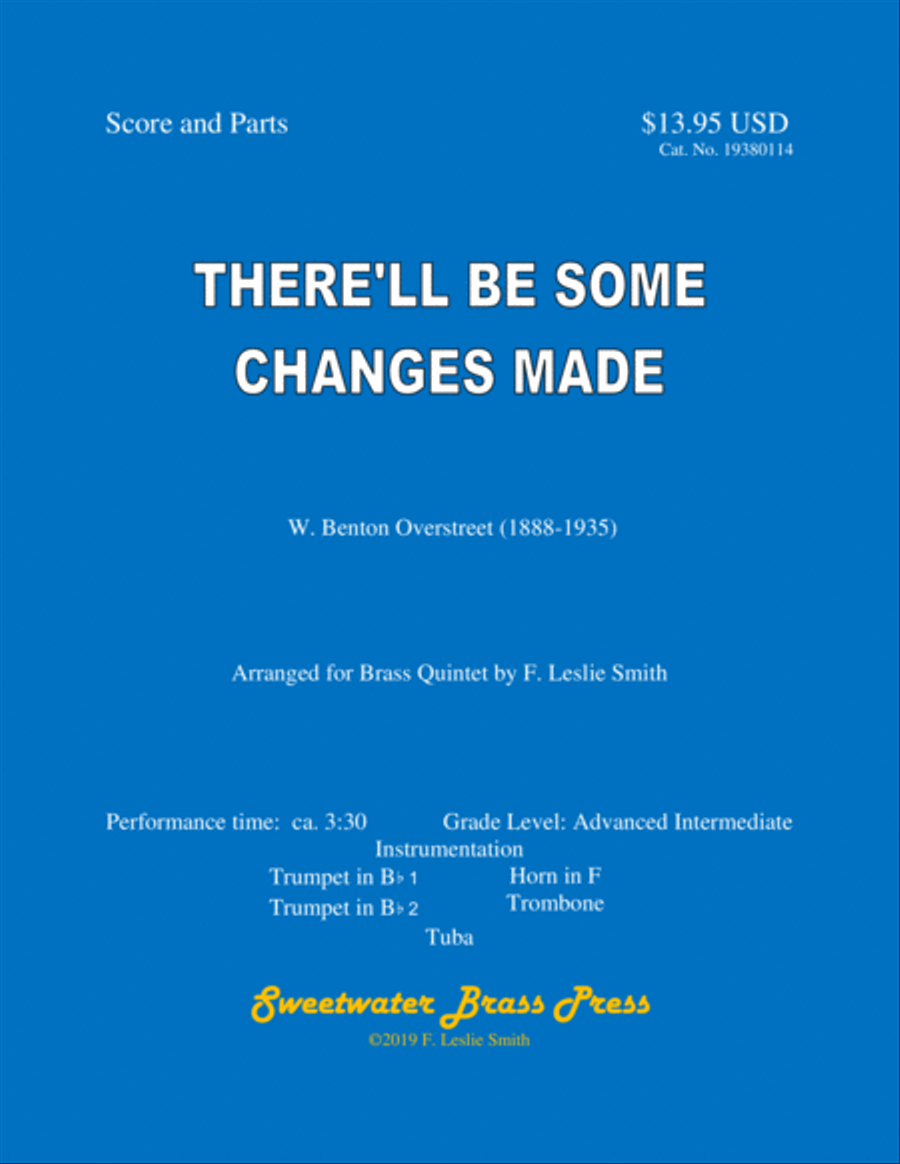Brass Ensemble - Level 4 - Digital Download SKU: A0.808689 Composed by W. Benton Overstreet (1888-1935). Arranged by F. Leslie Smith. Graduation,Holiday,Jazz,Traditional. Score and parts. 30 pages. Sweetwater Brass Press #4331333. Published by Sweetwater Brass Press (A0.808689). William Benton Overstreet did it all-played piano, wrote songs, led bands. Probably the accomplishment for which he’s most remembered today is his composing of There’ll Be Some Changes Made, published in 1921. Billy Higgins, popular stage comedian, wrote the lyrics, and Ethel Waters, then just 24, recorded the song on the Black Swan label. The disc quickly achieved hit status, and the song has remained popular across multiple musical platform styles ever since. This arrangement is a happy, fun piece and includes some of the great (and familiar) Vaudeville-style ornaments and phrases. It’s a real toe-tapper. For the most part this arrangement is up-tempo, about 140 bpm. It does slow to 92 at the first iteration of the verse and again for the final ¬6 measures of the piece. Time signature is 4/4 except for measure 89, which is 6/4. The key is B-flat throughout, and the melody weaves among all instruments. Trumpet 1 plays B5 (B-flat trumpet’s high C) briefly at measures 4 and 35 and for two measures at the very end of the piece. Tuba plays G3 briefly several times in measures 90-93. Other than that, there are no exceptionally out-of-normal-range notes. Trumpets 1 and 2 may wish to double-tongue at measure 64. This arrangement was completed in 2019, and performance time runs about 3 minutes, 30 seconds. The arranger, Les Smith, would be very interested in your comments; contact him at lessmith@ufl.edu. For more arrangements by Les, enter Sweetwater Brass Press (without the quotation marks) in the SheetMusicPlus search box.
